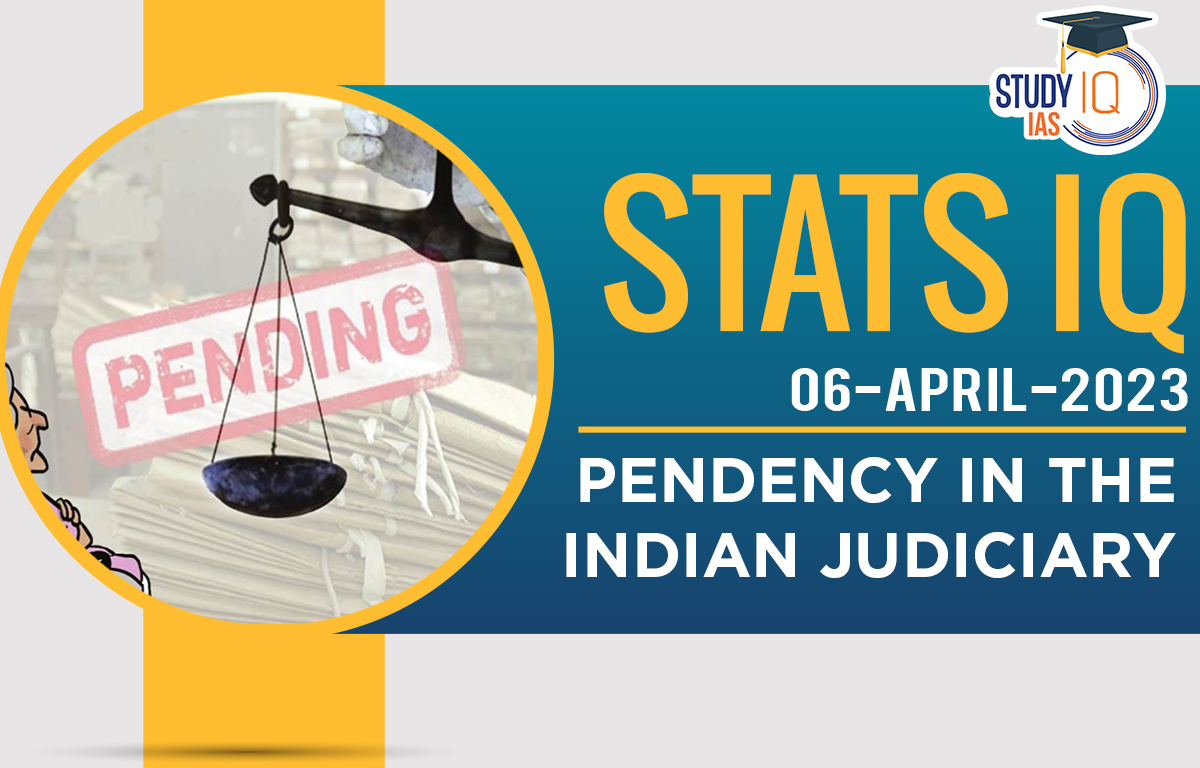Context: The India Justice Report (IJR) 2022 categorises data of States and UTs, based on the police, judiciary, prisons, and legal aid.
Justice Delivery in States:
- Large and mid-sized states: Karnataka ranked 1st followed by Tamil Nadu, Telangana, Gujarat, and Andhra Pradesh, respectively.
- Uttar Pradesh ranked the lowest (18th) among large states.
- Small States: Sikkim ranked first among 7 small states while Goa was at the bottom.
Pendency in States (2018-2022)
Current backlog of 4.8 crore cases in the judiciary.
- 1 in every 4 High Court (HC) cases is pending for more than 5 years.
- In Allahabad and Calcutta HCs, pendency of cases was over 63%.
- Northeastern HCs including Tripura, Sikkim and Meghalaya had less than 10% cases pending.
Rate of Case Clearance in Indian HCs (2018-2022):
The clearance rate in 2022 was 95%, with 5% getting added as a backlog.
- The rate was poorer during the pandemic years: 83% in 2021 and 77% in 2020.
- Madras HC had a high clearance rate of 107% in 2022.
- Tripura and Manipur, the clearance rate was over 100% as the supply of fresh cases was lower.
- Gujarat, Rajasthan, Himachal Pradesh and Madhya Pradesh had low clearance rates of about 80% or lower.
Judicial Vacancy(2022)
India had only 19 judges per one million people.
- Overall judicial vacancy in Indian HCs was 29.8% and High Court staff vacancies were at 25.6%.
- In Gujarat, Madhya Pradesh, and Rajasthan more than 40% of HC judge positions were vacant.
- Only 13% of HC judges and 35% of Subordinate Court judges are women.
Causes of Pendency:
- More Cases per Year: Active cases in HCs increased from over 41 lakh in 2014 to 53 lakh in 2022.
- Less Number of Judges: Number of judges is either stagnant or not increasing.
- Low Spending: Except for Delhi and Chandigarh, no State spends more than 1% of its total annual expenditure on the judiciary.
- Under Utilization of Funds: Most States have not fully utilised the funds given to them by the Central Government.
Pendency in Indian Judiciary: National Judicial Data Grid
- 93 crore cases are pending in the subordinate courts, 49 lakhs in High Courts and 57,987 cases in Supreme Court.
- In the Supreme Court, more than 30% of pending cases are more than five years old while in the Allahabad High Court, 15% of the appeals have been pending since 1980s.
- High Courts have high pendency with half of all the 8 million cases pending for more than three years.


 TNPSC Group 4 Admit Card 2025 Out at tnp...
TNPSC Group 4 Admit Card 2025 Out at tnp...
 Species Added to India's Flora and Fauna...
Species Added to India's Flora and Fauna...
 Daily Quiz 02 July 2025
Daily Quiz 02 July 2025





















